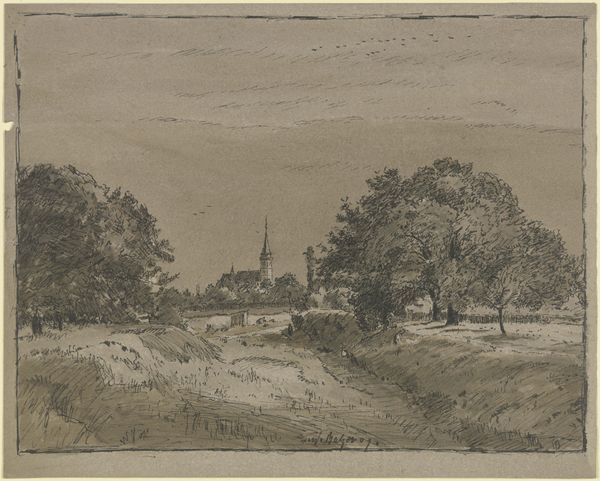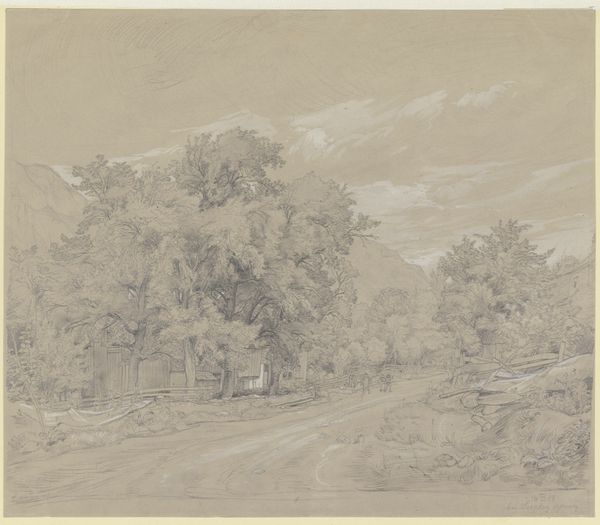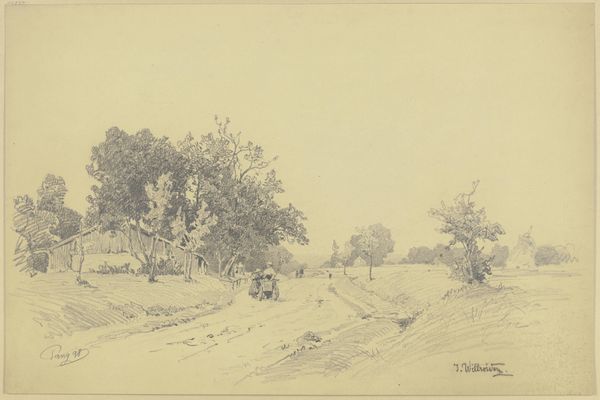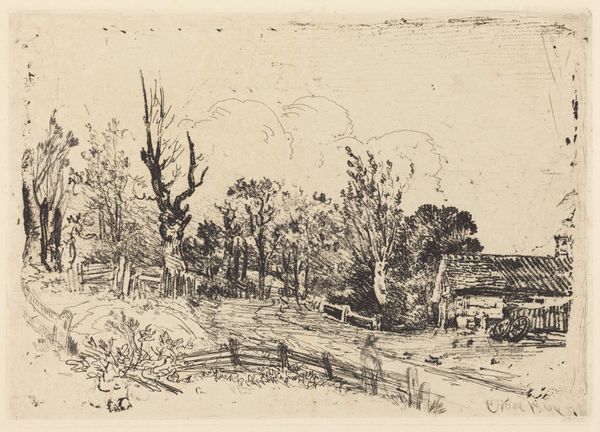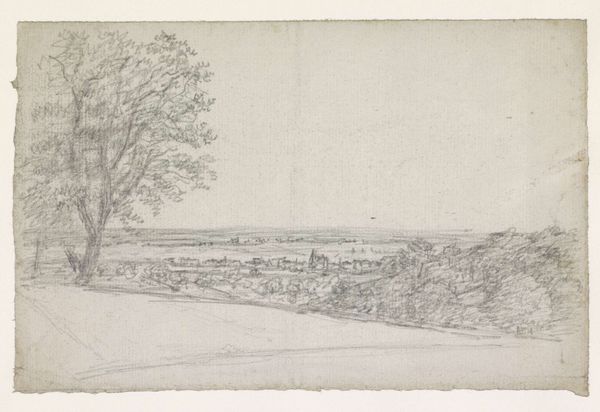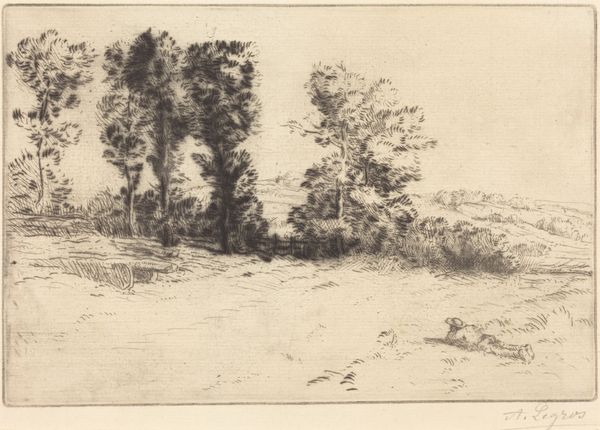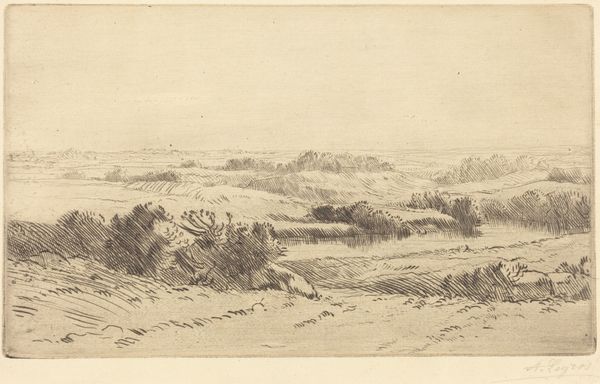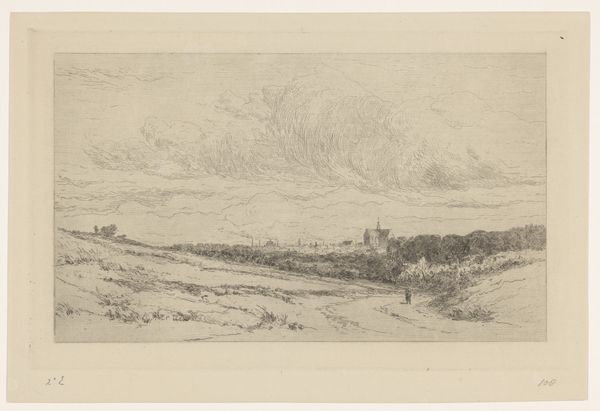
drawing, pencil
#
drawing
#
landscape
#
pencil
#
academic-art
#
realism
Dimensions: height 310 mm, width 475 mm
Copyright: Rijks Museum: Open Domain
Curator: Here we have "Landscape with a View of Bentheim Castle," a drawing in pencil by Egbert Rubertus Derk Schaap, dating roughly from 1872 to 1939. Editor: It’s muted, almost dreamlike. The castle in the background barely emerges from the foliage. A very classical approach to rendering landscape. Curator: Yes, Schaap, while working much later, harkens back to earlier academic traditions, creating a landscape both realistic and somewhat idealized. The choice of a pencil drawing provides that particular mood and probably served as a study for a larger piece. This castle represented the establishment for him, in many ways, due to its long, ruling heritage. Editor: I’m drawn to the textures created just by the pencil strokes. Look at the layering to give the impression of depth, the different pressures to get light and shadow. It really showcases the skill of his technique, doesn’t it? All those trees – an almost impossible variety suggested just by marks. Was this a piece produced for academic instruction? Curator: Quite possibly. Many artists of this period produced landscapes specifically to demonstrate technique. They aimed to reflect established norms of how landscape should be viewed and translated, for academic training and later, selling landscape views in the gallery system. Editor: And did they directly go into nature? I mean the composition is interesting as the landscape feels like a theater backdrop almost. Curator: It does, doesn't it? Probably based on sketches made en plein air, with a final, polished piece created in the studio. In its own way, it’s a construction, reflecting not only nature but a whole set of artistic conventions. The path leads the eye inexorably to the Castle in the backdrop, reminding viewers about class differences and labor, framing that political view through the ownership of the land itself. Editor: So much can be communicated even in the simplest materials. I am left admiring the subtle but highly complex means employed in it. Curator: Precisely, an apparently simple drawing reveals layers of skill, history, and ideology. Editor: Agreed! A glimpse into a past artistic mindset but through this simple combination of graphite, labor and a built environment.
Comments
No comments
Be the first to comment and join the conversation on the ultimate creative platform.


